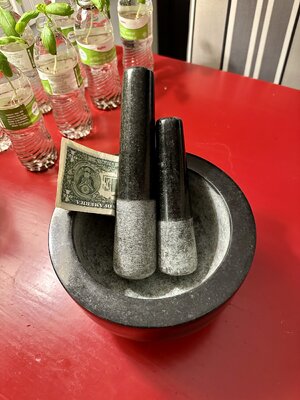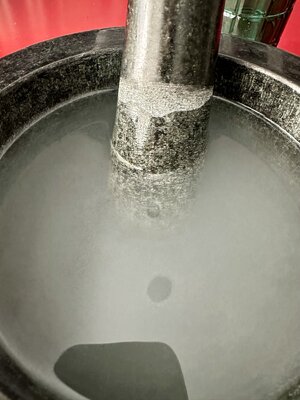HesNaughtHere
Well-Known Member
- Messages
- 51
Put a lot of work into my knife-skills during COVID and it's had a huge impact. Ingredients cooking evenly, for one, but it also saves a ton of time and goes a long way for presentation. Plus it makes cooking a little more funOn the topic of knife skills: If you don't already have one, purchase a good, high-quality, 8" Chef's knife (also called a French Knife). I recommend something like a Wüstof, Henckels (Zwilling) or a Sabatier. These knives are not cheap & can cost anywhere from $80 to $250 for a good 8" knife. Both Wüstof and Henckels are made in Solingen, Germany. Sabatier is made in France. There is a "fake" Sabatier called the "Edgekeeper" it's a knockoff for $20 or $30... One could get something like this as a beginner. But I'm not sure at all if it's any good. The legit Sabatier website doesn't even list "Edgekeeper" as one of their official lines of knives.
While you're at it, get a good quality knife sharpener and honing steel as well. Get the hand-held sharpener that matches the knife you purchase (get the Wüstof sharpener with the Wüstof knife, etc.) Do NOT get a cheap honing steel. A cheap honing steel can be made of softer metal than a good knife... you would be sharpening and honing the steel - not the other way around.
Now learn some basic cuts - dice, mince, chop, chiffonade... there are others but you don't need to know how to do a rondelle, brunoise, julienne, paysanne or battonet...
The easiest is just a rough chop, whereby the shape of the cuts doesn't really matter EXCEPT that the SIZE of the cut is roughly the same. And this goes with ALL of the CUTS. You want the same size to ensure even cooking (main goal) - and it looks better.
The Dice cut (cubes) comes in large (3/4" cube), medium (1/2") and small (1/4" cube) The Brunoise would be even smaller (1/8")
Mince is just that - even smaller than 1/8" but it's no longer a "cube" it's just roughly chopped to almost a paste it's so small. A "rocker chop" technique is used.
A chiffonade is small ribbons usually used on fresh leaves of herbs like basil, etc.
Practice on carrots, celery, onions, bell peppers, potatoes, zucchini squash, basil, other fresh herbs like parsley or oregano.
Make a vegetable soup out of your practice cuts.
One or two quality knives are a better investment than just about anything you could buy for your kitchen imo.
I really enjoy Japanese knives and use a 7" santoku knife (close to a chef's knife) and a 6.5" nakiri (kind of a vegetable chopper), but you could easily get away with just the santoku. Other than that, I keep a decent paring knife, serrated bread knife, one of those long slicing knives, and a cheap boning knife.




